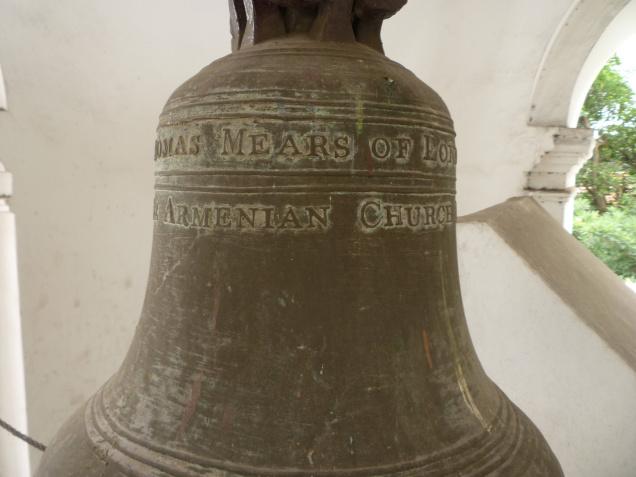
The Armenian Church standing on the eponymous street is one of my favourite locations in the city. Its solidly-built walls, quiet nooks and stately interiors fill me with a sense of peace that cannot be matched. Lovingly tended by the Armenian community in Calcutta and by the local caretaker Mr Alexander, it ought to be on every resident and tourist’s visit itinerary.
Leaving that aside, it was while walking around it with a group of Americans last week that I recalled that the heritage structure has its (albeit tenuous) links with the US of A. This concerns the bells of the church, which are housed in an independent three-storied tower, on the southern side of the yard. They are accessed via a three-century-old staircase by the more physically fit and brave. The church authorities restrict entry to the tower – a sensible precaution given the age of the staircase. The ground floor of the tower has three tombs all with the same carvings on the headstone. The inscriptions are in Armenian but they probably were members of the family that funded the tower. The belief is strengthened by the fact that the same motif as the headstones – winged angels, is repeated on all floors of the belfry.
The bells are rung every Sunday at 9.30 am. Said to be the largest in the city, there are six of them, donated at different times to the church, each weighing around 25 kgs. All of them were cast at the Whitechapel Bell Foundry of London. The company, founded in 1570, moved into its present premises in 1739 and continues in the same business. Talk about focus!
Given that all the bells in the Armenian Church bear the stamp of Thomas Mears, it indicates that they were all cast between 1787 and 1844, when two men of that name, probably father and son, were master founders with the company. It is of interest to note that the same company cast the bells for St Pauls Cathedral and Westminster Abbey in London, besides several other churches in England and the Big Ben in the Houses of Parliament in London.
Now for the American connect. The Liberty bell of Pennsylvania is one of the treasured heritage possessions of the USA. Commissioned in 1751, it was cast at the same Whitechapel Foundry and shipped to Philadelphia where it hung in the steeple of the Pennsylvania State House. It cracked even during its first ring and had to be recast twice locally before it could be used properly. A second and more lasting crack in 1835 ended its career as a ringing bell but it has remained a tourist attraction. Scaled down models of it, crack and all, remain popular souvenirs across the country. Our own ‘Belfry Six’ as the set of bells in the Armenian Church are referred to, have thankfully remained crack-free.
I wonder if any other church in our city has bells cast by the same company.
source: http://www.thehindu.com / The Hindu / Home> Features> MetroPlus> Society / by Sriram V / Chennai – June 27th, 2014